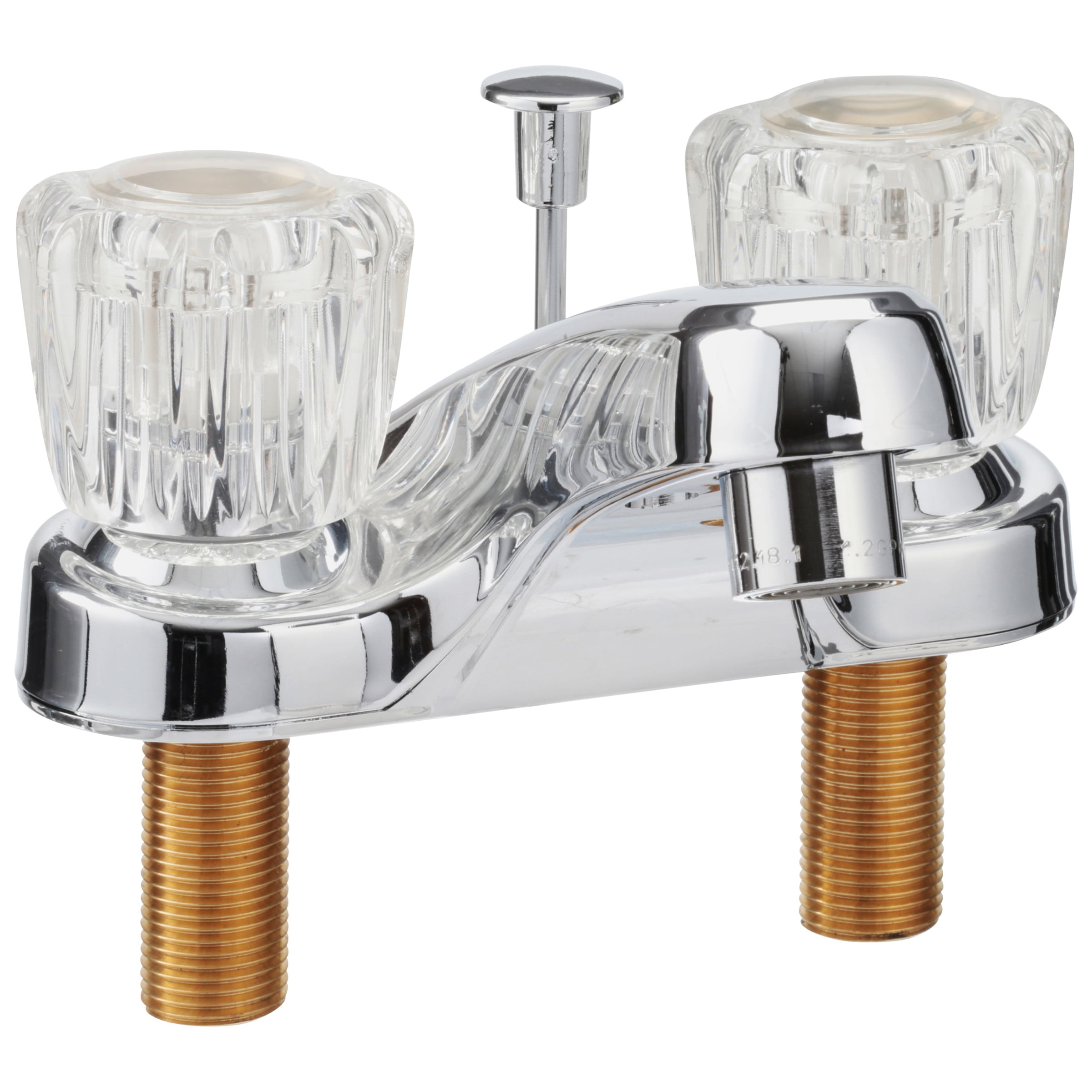Causes of Low Water Pressure in Bathroom Faucets: Bathroom Faucet Low Pressure

Bathroom faucet low pressure – Low water pressure in bathroom faucets can be a frustrating issue. Several factors can contribute to this problem, including blockages, leaks, and other issues that restrict water flow. Understanding the potential causes can help you troubleshoot and resolve the problem.
Blockages
Blockages are a common cause of low water pressure in bathroom faucets. Mineral deposits, sediment, or debris can accumulate in the aerator, faucet screen, or supply lines, restricting water flow. Regular cleaning and maintenance can help prevent blockages.
Bathroom faucet low pressure can be a real pain. If you’re experiencing this issue, there are a few things you can do to try and fix it. One option is to install a new delta bathroom faucet. Delta faucets are known for their high quality and durability, and they come with a lifetime warranty.
If you’re not sure how to install a delta bathroom faucet, you can follow the step-by-step instructions here. Once you’ve installed your new delta bathroom faucet, you should notice a significant improvement in water pressure.
Leaks
Leaks in the faucet or supply lines can also lead to low water pressure. Even small leaks can reduce water pressure and cause water to drip from the faucet. Inspect the faucet and supply lines for any signs of leaks and repair them promptly.
The feeble stream of water trickling from my bathroom faucet mocks me, its feeble pressure a testament to years of neglect. I long for the invigorating cascade that once graced my mornings, but alas, it seems like a distant dream.
Perhaps it’s time to consider a new single hole two handle bathroom faucet , its sleek design and ergonomic handles promising a revitalized bathing experience. Yet, even as I contemplate this upgrade, the low pressure lingers in my mind, a persistent reminder of the need to address the underlying plumbing issues.
Hot and Cold Water Pressure Issues, Bathroom faucet low pressure
In some cases, low water pressure may only affect hot or cold water. This can indicate a problem with the water heater or the hot/cold water supply lines. A plumber may be needed to diagnose and resolve these issues.
Troubleshooting and DIY Fixes for Low Water Pressure

Low water pressure in bathroom faucets can be a frustrating issue. However, with a few simple steps, you can often troubleshoot and fix the problem yourself. Here’s a guide to help you get started.
Before you begin, check if the low water pressure is limited to the bathroom faucet or affects the entire house. If it’s only the bathroom faucet, the problem is likely localized to the faucet itself or the pipes leading to it.
Checking and Cleaning Aerators
Aerators are small devices attached to the end of the faucet spout that mix air with water, creating a more forceful stream. Over time, aerators can become clogged with mineral deposits or debris, reducing water pressure. To check and clean the aerator, follow these steps:
- Unscrew the aerator from the faucet spout using a wrench or pliers.
- Soak the aerator in a solution of vinegar and water for 30 minutes.
- Use a small brush or toothpick to gently remove any debris or mineral deposits.
- Rinse the aerator thoroughly with clean water.
- Reattach the aerator to the faucet spout.
Professional Assistance for Persistent Low Water Pressure

If the DIY fixes mentioned above fail to resolve the issue, it is advisable to seek professional assistance from a qualified plumber. Persistent low water pressure can indicate underlying issues that require specialized knowledge or tools to diagnose and repair.
Potential Underlying Issues
- Clogged or corroded pipes: Over time, mineral deposits, sediment, and debris can accumulate within the pipes, obstructing water flow.
- Faulty pressure regulator: The pressure regulator, typically located near the water main, controls the water pressure entering the home. A malfunctioning regulator can result in low water pressure.
- Damaged or leaking fixtures: Worn-out or damaged faucets, showerheads, and other fixtures can contribute to water pressure loss.
- Frozen pipes: In colder climates, exposed pipes can freeze, blocking water flow and causing low pressure.
- Municipal water supply issues: In rare cases, low water pressure can be caused by problems with the municipal water supply, such as a main break or scheduled maintenance.
Finding a Qualified Plumber
When choosing a plumber, consider the following factors:
- Licensing and insurance: Ensure the plumber is licensed and insured to protect yourself and your property.
- Experience and reputation: Look for plumbers with experience in resolving low water pressure issues and positive customer reviews.
- Availability and responsiveness: Choose a plumber who is available promptly and communicates effectively.
Estimated Costs
The cost of repairing low water pressure can vary depending on the underlying issue and the extent of work required. Here are some approximate estimates:
- Clearing clogged pipes: $100-$300
- Replacing a pressure regulator: $150-$400
- Repairing or replacing fixtures: $50-$200 per fixture
- Thawing frozen pipes: $200-$500
It is important to note that these are just estimates, and the actual cost may vary based on factors such as location, labor rates, and the complexity of the repair.